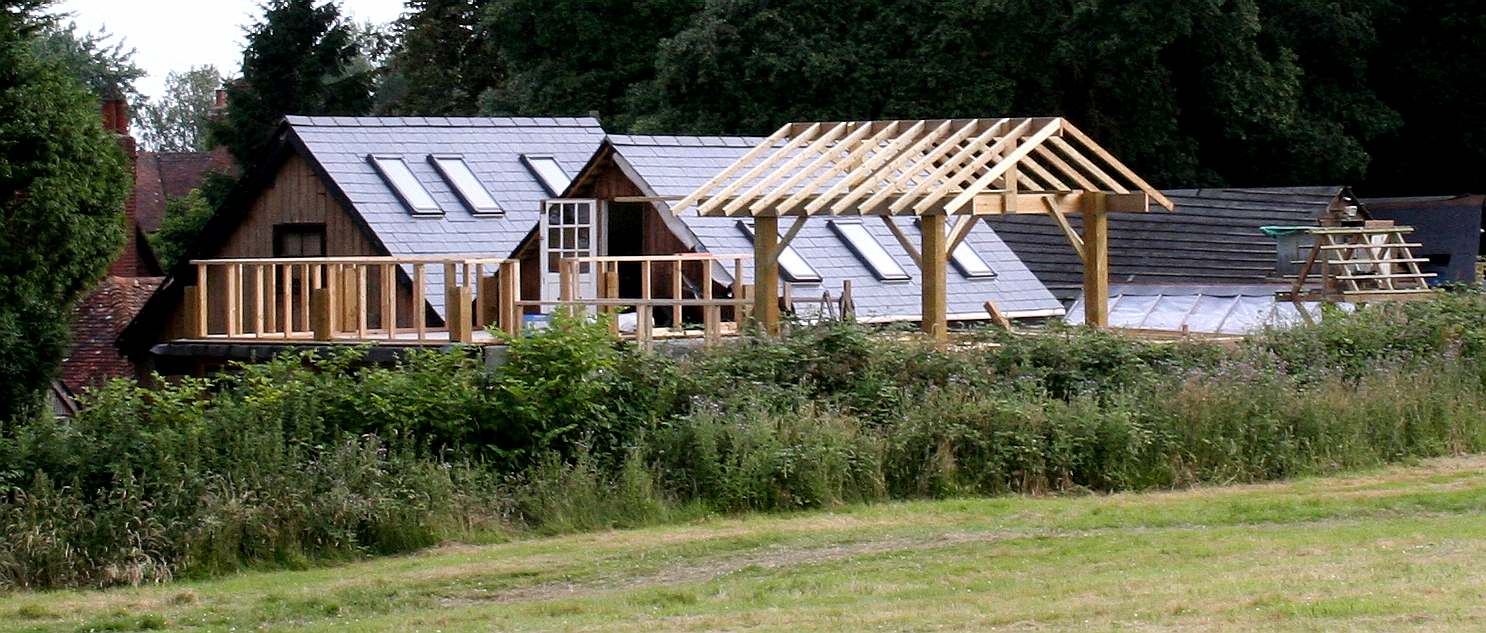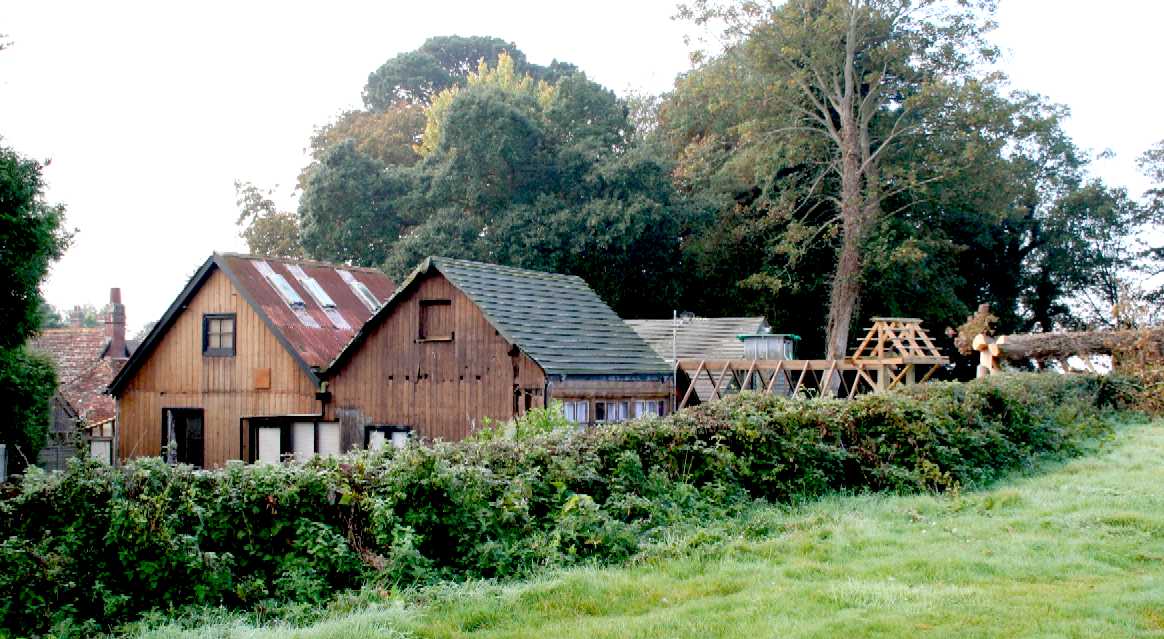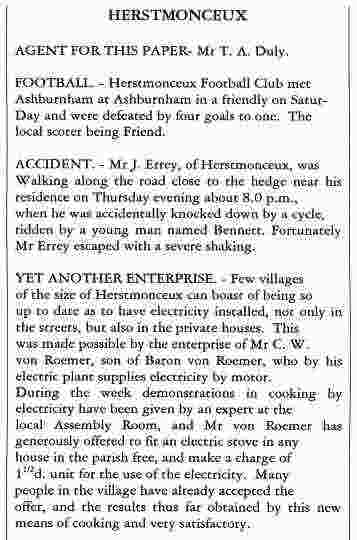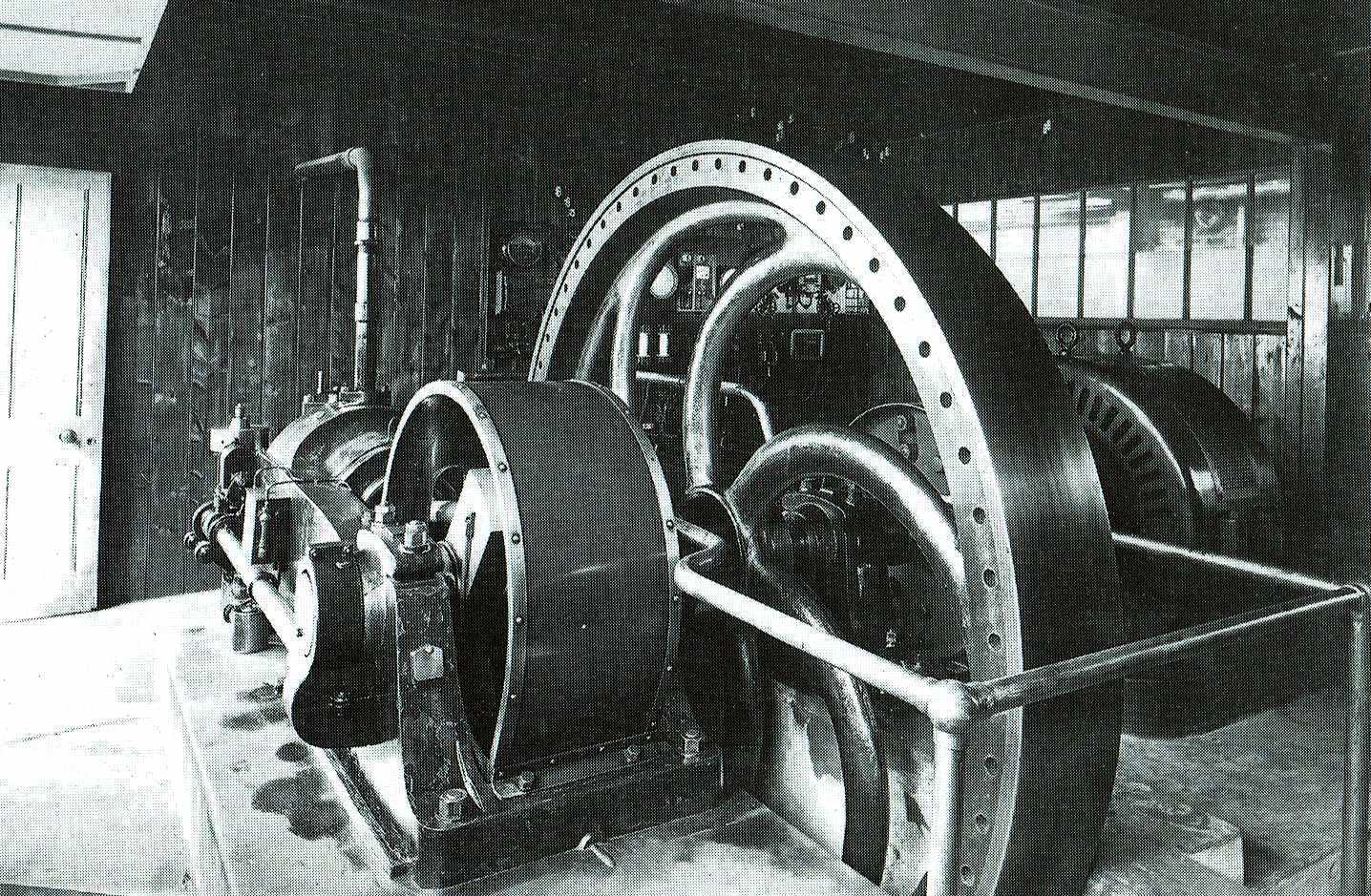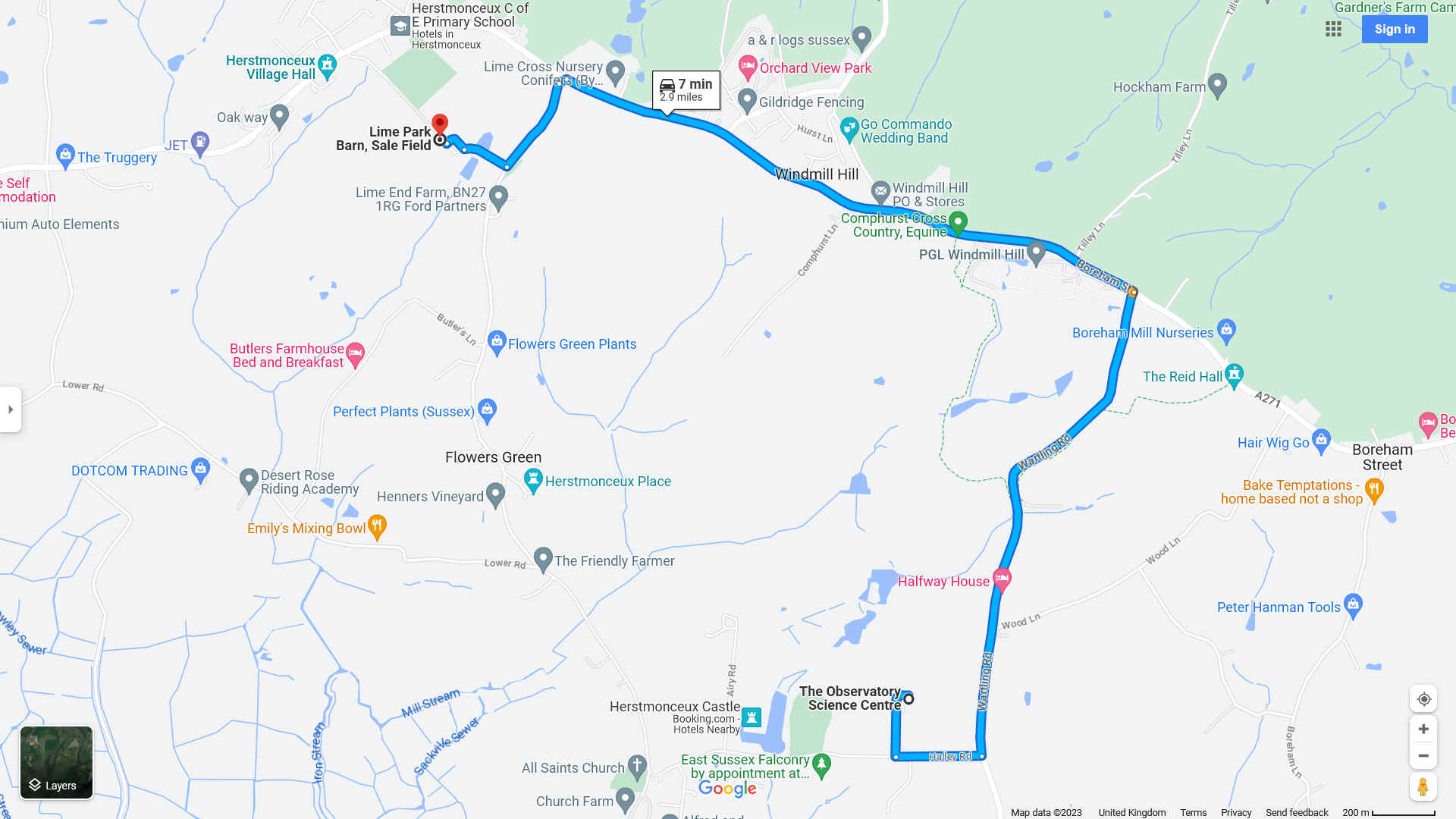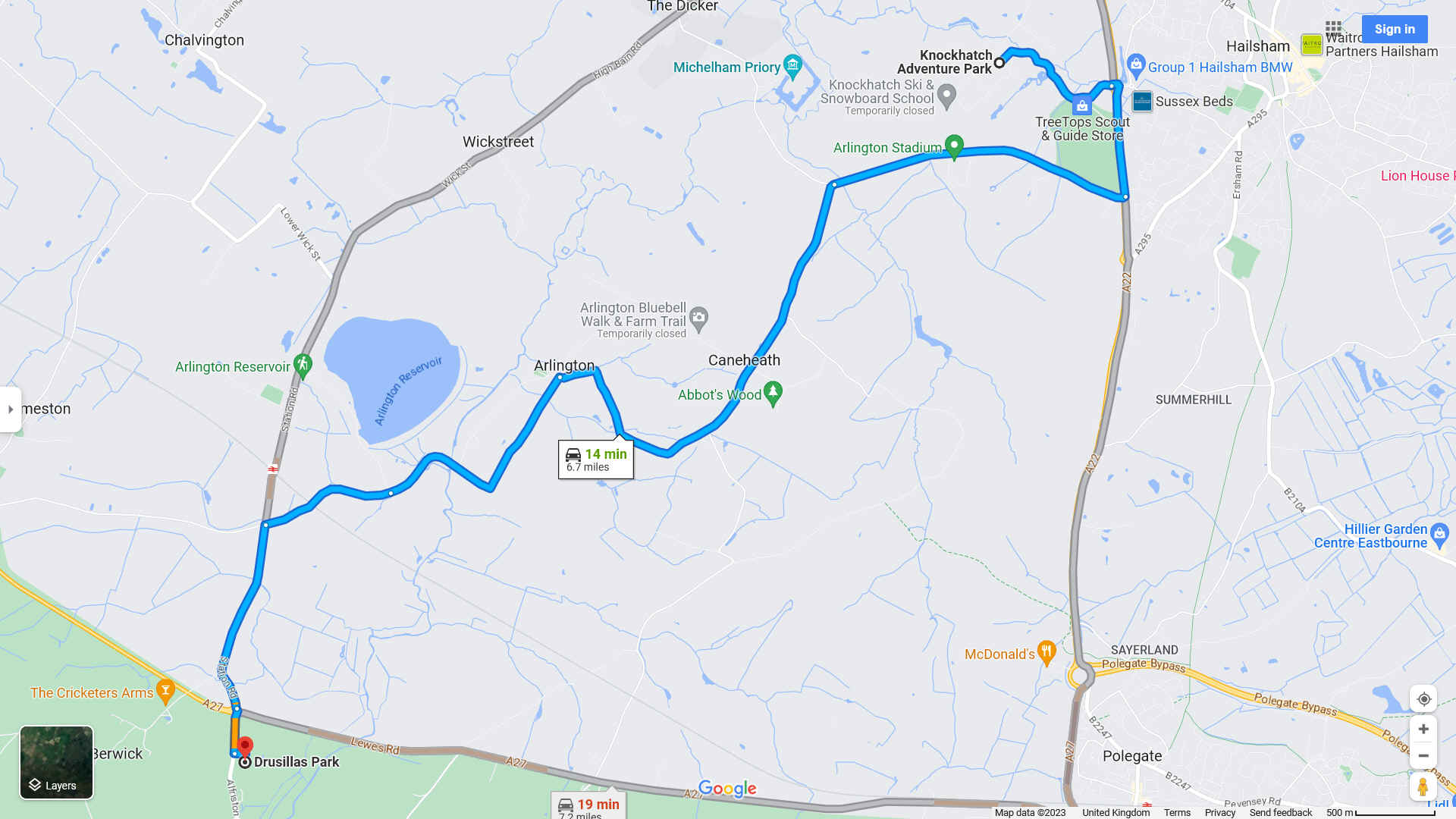|
M U S E U M U P K E E P
Please use our A-Z INDEX to navigate this site or return HOME
|
|
LAST SURVIVING - EARLY ELECTRICITY GENERATION - Industrial archaeology is the hardest of all to conserve. The reason being that commercial enterprises are not attractive, but functional buildings, sometimes incongruous in amongst traditional brick and clay tile builds - but of course that is the whole point. There are thousands of lovely cottages and country estates, but only one surviving example of electrified villages, fortunately, fronting onto a field that is mainly used by dog walkers and ramblers. Thus, on that face we need to attempt to blend into the rural scene with rustic outbuildings.
Saved from collapse in 1981, this unassuming complex saw the beginning of the new age of electricity at the turn of the last century. In 1900, the only people who could afford Thomas Edison's 'EdiSwan' light bulbs were wealthy landowners. Even then, only a very few could afford batteries to store power. But in Herstmonceux, they had a massive energy store, with a whole unit full of lead plate batteries on shelves, crammed to ceiling height with huge glass cases filled with gallons of sulfuric acid. This is the very first electricity distribution load-levelling arrangement, and the only example surviving anywhere in the world. The picture above is thought to be of the building around 2017. Over the intervening years coal and glass have been dug up all over the site, confirming that when decommissioned, the batteries were sometimes smashed and buried on site. Conservation work continues with the reinstatement of the north wing, a section partly removed and partly collapsed before WWII - not visible in this picture.
Interestingly, RWE in Germany are now building giant battery stores (220MW) to stabilize their grids against solar and wind energy spikes. The concept is the same as begun here in this humble building around C. 1900. Before that, the Pillsford Project (2022) in East Yorkshire was the largest in Europe, with Ninfield in East Sussex (2023), being one of the latest additions to the race for sustainable electricity.
PLANNING BLIGHT, A LEGAL WAR OF ATTRITION, UNBECOMING THE DUTY OF CARE
Having attempted many times over 20 years, from 1985 to 2005, to attain a recognised use, in the past the local authority forced the applicant(s) to appeal five times. Each time denying the history attaching to this heritage asset, and not following the correct protocols in Government Circulars and Planning Policy Guidance Notes, 15 and 16 in particular.
Though applications were determined to the point where costs became a major issue, as costs were being used as a weapon to dissuade the applicant from pursuing any further.
It soon became clear there were competing local interests, commanding public taxes, those coffers being used most negatively, and not in the interest of the general public. And certainly not in the interests of the historic asset, which suffered planning blight, and still suffers as a result, even today in 2023.
These legal battles consumed more than the first twenty years since acquisition, since an agreement between the district council and the occupier in 2005, to secure a recognised and beneficial use was breached, despite being a stamped Consent Order in the Eastbourne County Court.
The battle for recognition continues today, with the Information Commissioner, but may soon end up as the sixth appeal to the Secretary of State, in the hope of defining a cost effective beneficial use. This is unlikely to be use as a Museum, stand alone, since most such enterprises lose money - as indeed would be the case if no ancillary use was granted alongside and to support the administration of running a Museum.
Operation as a Museum, must therefore include other uses to generate a suitable income, commensurate with and aimed at the eventual application for World Heritage Site listing with UNESCO. Where, a suitable management plan has to be in place, sometimes at the expense of the public purse, but in the case of a privately managed monument, to include uses that will be able to generate the necessary funds for sustainability, in the face of the rising cost of living and ever increasing bank and energy charges.
His Majesty's Government appoints Ministers to look after heritage assets, as part of the DCMS, Department for Digital Culture, Media and Sport. The Secretary of State in 2023 is the Rt Hon Lucy Frazer KC MP.
TREATMENTS
The original Generating Station at Herstmonceux Museum is built of untreated timber, necessitating repairs and application of preservatives on a regular basis.
Materials £ .... Labour £ ...
MAINTENANCE & REPAIRS
Window cleaning, gulley clearing, guttering. All need routine maintaining. And then there are the repairs, the reinstatement of the missing section, taken down in 1936. The well head, etc.
Materials £ ... Specialists £ ...
STAFFING & GENERAL ADMINISTRATION
Salaries £ ... Wages £ ...
LANDSCAPING, FENCES, HEDGES & GRASS CUTTING
Materials £ ... Labour £ ...
SECURITY
£ ...
ACCOUNTS & LEGALS
Lobbying £ ... Bookkeeping £ ... Solicitors £ ... Accountants £ ... Planning consultancy £ ...
All of the above, when combined, far outstrip any single use, such as residential or workshops. There would have to be a perfectly tailored package, designed to pay for the ordinary running costs, and improvements.
POTENTIAL FUTURE UNESCO WORLD HERITAGE SITE CONTENDER - See: Margaret Pollard's memories of Herstmonceux 2005, London University survey 1999, and Ronald Saunders statement July 1997, if you like reading in-person historical accounts. The generating works is seen here in 2014. Note, that in this picture, the north wing has been taken down. This is now partially re-instated. The cost of reinstatement was/is considerable.
PLANNING ARGUMENTS
The local authority have supported other venues in lesser need of heritage support. These include The Observatory Science Centre, the windmill at Windmill Hill, Drusillas, and Knockhatch, to name just four. Each of which has built on attractions, including themed buildings, or at least a tea room.
The passing of a planning application for between 70-140 houses in the adjacent field (Lime Cross), supports the argument that two-storey housing with tall pitched roofs facing into the field, would not be incongruous, such as to cause an objection to two-storey buildings at a similar roof height (or lower) being constructed, subject to suitable materials to blend into the rural location.
The design of existing structures blend well into the country setting, with many walkers passing favourable comment, as to the climbing frame and method of saving a tree from felling, with a pergola and supporting frame.
The area does not have a local attraction for young, or mature families to enjoy.
The Museum is an obvious venue for local schools, colleges, and universities.
Reuse of this extant building, is climate friendly and sustainable. Especially in the using of sustainably sourced timber, which constitutes a carbon lock, in an age where climate change is a major issue.
Policies must be applied consistently, as per the case precedents cited.
PART OF THE SCENE - The old Generating Station has been extant for many years, and is part of the local heritage view, as is the windmill at Windmill Hill.
OTHER COSTS INCLUDE:
1. 2. 3.
RURAL ELECTRICITY SUPPLIES - A National gas engine of 36 horsepower, single cylinder, with a generator clearly visible on the right hand side of the crankshaft. An engine near identical to this one was fitted at Herstmonceux. This one being at Mr de Roemer's aviation factory at the Crumbles, Eastbourne. Famous visitors included: Lord & Lady Gage, Lord & Lady Hailsham and Lord & Lady Shawcross.
POTENTIAL FUTURE UNESCO WORLD HERITAGE SITE CONTENDER - See: Margaret Pollard's memories of Herstmonceux 2005, London University survey 1999, and Ronald Saunders statement July 1997, if you like reading in-person historical accounts. The generating works is seen here in 2014. Note, that in this picture, the north wing has been taken down. This is now partially re-instated.
LINKS & REFERENCE
https://www.nationaltrust.org.uk/batemans https://batterseapowerstation.co.uk/
MAP SHOWING PROXIMITY TO THE OBSERVATORY - Herstmonceux Museum is some 2.9 miles and 7 minutes drive from The Observatory Science Centre, based at Herstmonceux Castle.
MAPS SHOWING PROXIMITY TO OTHER SUSSEX ATTRACTIONS - Herstmonceux Museum is some 15 minutes drive from Knockhatch Adventure Park, and another 14 more minutes on the A22 dual carriageway, then A27 to Drusillas Zoo Park.
|
|
|
Please use our A-Z INDEX to navigate this site or return HOME
|
